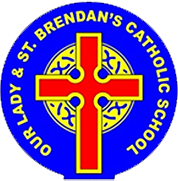PE
Victory is having done your best. If you’ve done your best, you’ve won.
- Bill Bowerman
PE Curriculum Intent
The aims of Physical Education (PE) are to develop children’s experiences and enable them to achieve personal successes, the appropriate skills and confidence to partake in all sports. Through our teaching, explicit links are made as to the benefits exercise has on our physical and mental well-being. The children have opportunities to take part in a range of sporting competitions which are run by the Blessed Christopher Wharton Academic Trust (BCWCAT).
Our intentions in PE are to ensure that all children:
- develop competence to excel in a range of physical activities.
- are given opportunities to develop and improve their mental health.
- are physically active for sustained periods of time.
- engage in competitive sports and activities.
- lead healthy, active lives.
There are three “pillars of progression” that pupils need to develop the competence to participate:
- Motor competence - knowledge of the range of movements that become increasingly sport- and physical activity-specific.
- Rules, strategies and tactics - knowledge of the conventions of participation in different sports and physical activities.
- Healthy participation - knowledge of safe and effective participation.
It is important to have a strong foundation of fundamental movement skills (FMS) starting in the early years. This then “sequentially develops” through transitional activities into more specialised sport and physical activity contexts. FMS is a precondition to accessing the later, more specialised movement patterns required for competence in sport and physical activity.
Declarative knowledge is “know-what” (a verbal understanding) and procedural knowledge is the “know-how” (being physically capable). Pupils develop their knowledge through sufficient practice and feedback. We ensure that the curriculum provides enough opportunity for pupils to master the intended knowledge, so they do not move too quickly from one context to another.
Implementation
We teach the EYFS and National Curriculum and use PE Planning as a planning tool. Teaching is also informed by Sports UK PE Specialists, who support teachers in building the knowledge and skills at each stage of children’s physical education.
PE is taught one session a week for all pupils. Year 4 pupils take part in swimming lessons for an additional one hour per week, on top of their weekly PE lesson. Children will come into school already wearing their PE kit on the day they are taught PE.
Referring to our long-term planning, pupils develop their PE skills throughout their school life. Pupils revisit units of work within each key stage (KS1, LKS2 and UKS2) to consolidate and progress their knowledge and skills. Other units of work showcase how the skills developed are transferable across all forms of physical activity. Pupils are assessed at the end of each unit of work so that future planning can take previous learning into account and appropriate support and challenge can be provided.
Pupils with special educational needs access the PE curriculum, where possible. This is achieved through differentiating the lesson to include all. Planning for these pupils is informed through their EHCPs and IEPs (where applicable) to build on motor competence, social skills and healthy participation. In addition to this, some pupils also partake in ‘sensory circuits’. This is a half-hour session that takes place 2 times a week to build their gross and fine motor skills. Pupils are also able to partake in 'active breaks' to reduce sitting time; increase physical activity; improve cognitive function, mood, and on-task behaviour.
Our Lady and St. Brendan’s are also working alongside JU:MP Bradford. In the JUMP programme we want all children and young people to be supported though increasing their capabilities, opportunities and motivation, to be physically active, and through increasing families' capabilities, opportunities and motivation to support their children to be physically active. This means that policy and strategy, community engagement, and activities need to be implemented across different settings and sectors concurrently.
Impact
We will measure the impact of our physical education by:
- Monitoring which children have taken part in after school clubs and competitive sport events, ensuring that all children can take part during their school life.
- Monitoring the progress from year to year and key stage to key stage to ensure pupils remain ‘on track’ from their starting points.
- Conducting regular learning drop ins and pupil voice questionnaires.
- PE Premium spend analysis through the Primary PE and Sport Premium funding.
Children will make good progress from their own personal starting points. By the end of Year Six they will have developed a greater understanding of the benefits of healthy living. This will promote long term healthy, active lifestyle choices. Children will have built knowledge, improved their skills and deepened their social wellbeing within a fruitful partnership between home, school and the community.
Our PE Curriculum
pe whole school long term plan.pdf
pe progression of skills document.pdf





